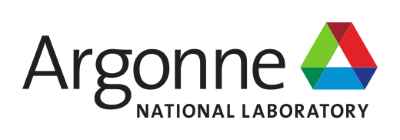For the past 75 years, researchers at Argonne National Laboratory have made key advancements in basic and applied research spanning energy storage, supercomputing, environmental sustainability, and healthcare. With five national User Facilities, Argonne is a hub where more than 7,000 experts from government, industry, and academia come together to tackle the world’s most pressing challenges, from climate change to the COVID-19 pandemic. Paul Kearns, Director of Argonne National Laboratory, discusses the lab’s history, current research programme, and major accomplishments.
Paul K. Kearns, Director of the U.S. Department of Energy’s Argonne National Laboratory.Credit: Argonne National Lab
In 1942, Enrico Fermi began his work on the Chicago Pile-1, the world’s first artificial nuclear reactor, which led to the establishment of the Manhattan Project. Because Fermi’s project was deemed too dangerous to conduct at the University of Chicago, Argonne National Laboratory was established in 1946 outside Chicago. Argonne is now one of the Department of Energy’s 17 national laboratories. As a multi-programme science laboratory managed by the University of Chicago, Argonne has expanded its focus to basic and applied research primarily in computing and the physical and life sciences.
What research facilities are available?
One thing that makes Argonne unique is the scale of our facilities which attract a world-class community of collaborators. Each year we welcome about 7,000 users, and they have made some fantastic discoveries over the past 75 years. For instance, the Advanced Photon Source, which is a very bright, high-energy X ray source, allows scientists to characterize materials down to the atomic scale. This facility brings immense value to the healthcare field because researchers can understand the structure of various proteins, which is useful for developing drugs and vaccines.
Argonne also is home to one of two DOE Leadership Computing Facilities, which provides supercomputing resources to the research community. For example, scientists have used this facility with artificial intelligence to screen more than three billion small molecules to identify potential therapeutics to treat COVID 19. We’re about to step into the exascale computing era next year with a computer called Aurora that can run more than a billion billion (1018) operations per second, which is 64 times faster than our current cutting-edge system.
What are some of Argonne’s most important accomplishments?
Our historical contributions are quite impressive in terms of the peaceful uses of nuclear power. Argonne has deployed reactor technology across the nation and the world. Today, it is involved in the Department of Energy’s Advanced Reactor Demonstration Program, which aims to expand access to clean energy. We also work with the Department of Energy National Nuclear Security Administration to reduce the threat of nuclear materials around the world.
A lot of the fundamental work on superconductivity and energy storage technology conducted at Argonne has driven improvements in the performance and safety of battery materials, oxides, polymers, and other materials, while also reducing costs. This research is contributing to the electrification of transportation.
Scientists at Argonne have also done some fantastic work with the pharmaceutical industry, including the development of more effective HIV drugs and COVID-19 vaccines.
What is the lab working on now?
Climate action is a current initiative at Argonne, which has three research areas. One area is focused on decarbonizing the energy pipeline and improving energy storage. Another involves climate modeling. We’re collaborating with the U.S. Office of Biological and Environmental Research to better understand what is happening now with the global climate and what the potential impacts might be in the future. The third element is helping industry and communities adapt by either reducing these impacts or making better decisions regarding infrastructure development. We’re working on understanding hurricane paths so that state and local governments can better prepare their emergency responses.
How do collaborations play a role in Argonne’s work?
Because the problems we’re working on are large and complex, addressing and solving them takes robust conversations involving diverse perspectives across many disciplines. Argonne is uniquely situated to convene experts across government, academia, and industry. We give people the opportunity to bring their ideas forward so we can identify the best path to take. A great example of that is the Joint Center for Energy Storage Research, which is focused on next-generation batteries. We have 18 collaborators involved in that project, including scientists from national laboratories, universities, and industry.
What’s next?
We have major upgrades underway for our Advanced Photon Source and supercomputing facilities. We’re excited to incorporate advancements in machine learning and artificial intelligence into our current research programmes, including the one on climate modeling.
In addition to our research advances, we’re committed to building an inclusive, engaged community at the laboratory. I engage our employees in biweekly conversations open to all, where they ask questions, share what they feel good about, and express concerns. Hearing from employees keeps us grounded and helps us decide how we’re going to nurture that safe, welcoming, and inclusive environment.


